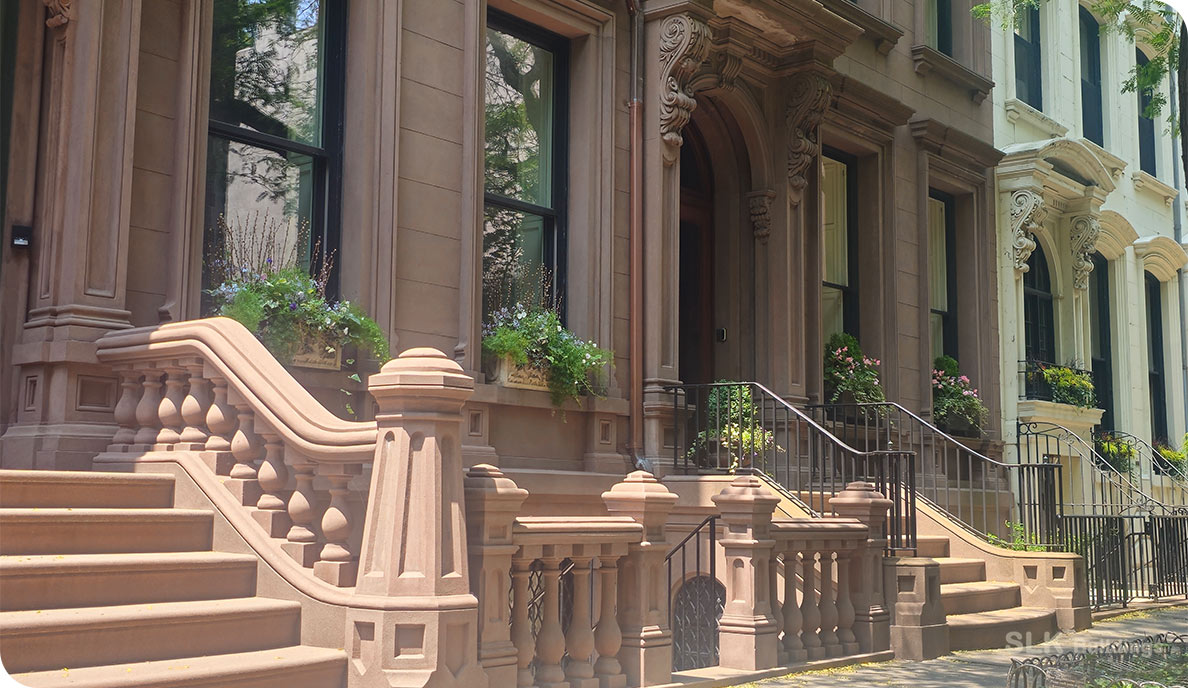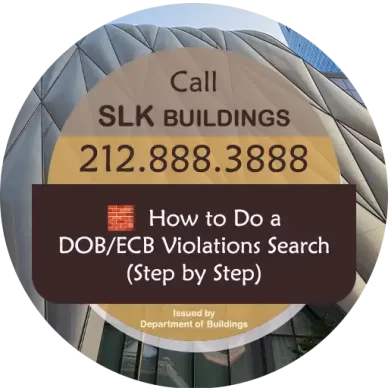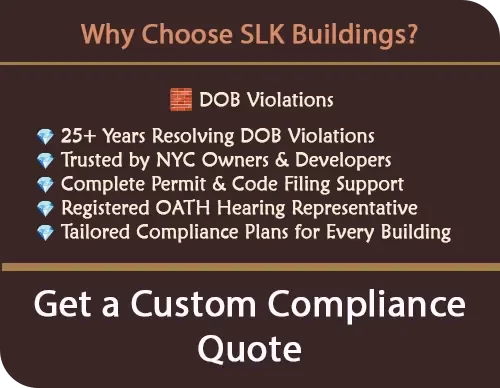DOB Violations in NYC: 7 Things Every Property Owner Must Know

Navigating NYC building compliance begins with one essential task: knowing what violations are tied to your property. Whether you’ve just purchased a building or received a notice, performing a DOB and ECB violations search is the first step toward resolution. This guide walks you through it clearly and efficiently—no confusion, no wasted time.
In New York City, the NYC Department of Buildings (DOB) plays a crucial role in ensuring safety and compliance with building codes and regulations. DOB violations are issued when properties fail to meet these standards, ranging from minor infractions to serious safety hazards. Here’s a comprehensive guide to understanding NYC DOB violations:
Learn More:
💎 DOB Violations
💎 How to Challenge a DOB Violation
💎 Resolving DOB Violations
💎 DOB Penalty Schedule
💎 Boiler Violation
💎 Elevator Violations
💎 Façade Violations
💎 Sidewalk Violations
💎 Scaffolding Violations
💎 Exploring NYC Building Violations
💎 Understanding NYC Building Violations
💎 Fire Safety Violations
💎 Parking Structure Violations
💎 OATH Summonses
Why Choose SLK Buildings?
Your New York City DOB Violations Partner
- 💎 20+ Years Resolving Violations
- 💎 Trusted by Owners & Developers
- 💎 One-Stop Permit & Code Support
- 💎 OATH-Registered Representative
- 💎 Personalized Compliance Strategies
Got a DOB violation? Let SLK Buildings handle it swiftly and professionally.
Construction Violations
- Description: These violations occur during construction or renovation projects and typically involve issues like improper scaffolding, failure to obtain permits, or not following approved plans.
- Examples: Working without a permit, exceeding allowable noise levels, or failing to safeguard the public.
Maintenance Violations
- Description: These violations are related to the upkeep of buildings and include problems such as broken windows, inadequate lighting, or structural deterioration.
- Examples: Failure to maintain exterior walls, unsafe conditions in common areas, or inadequate garbage disposal.
Fire Safety Violations
- Description: Fire safety violations focus on ensuring buildings are equipped to prevent fires and safely evacuate occupants in case of emergencies.
- Examples: Lack of fire alarms or extinguishers, blocked exits, or improper storage of flammable materials.
Compliance and Operational Violations
- Description: These violations encompass a broad range of issues including operating businesses without required permits, illegal conversions, or violating zoning regulations.
- Examples: Running an unlicensed daycare, operating an illegal Airbnb, or converting a residential property into commercial space without proper zoning permits.
CONSEQUENCES OF VIOLATIONS
Penalties and Fines
- Violations can lead to substantial fines ranging from hundreds to thousands of dollars per violation, depending on the severity and recurrence.
- Property owners are usually given a period to correct violations, after which fines may escalate or legal action may be taken.
Court Proceedings
- Serious violations can result in summonses to appear in court, where further penalties or corrective actions may be mandated.
- Continued non-compliance can lead to liens against the property or even criminal charges in extreme cases.
Public Records and Impact on Property
- DOB violations are public record and can affect a property’s reputation and resale value.
- Potential buyers or tenants may be wary of properties with a history of violations, impacting marketability.
RESOLVING VIOLATIONS
Corrective Actions
- Property owners must rectify violations by addressing the issues cited by the DOB.
- This often involves hiring licensed contractors to perform necessary repairs or modifications.
DOB Hearings and Appeals
- Owners have the right to contest violations through hearings and appeals, presenting evidence of compliance or challenging the validity of citations.
- Consulting with legal counsel specializing in NYC building codes and regulations can be crucial during this process.
In New York City, the Department of Buildings (DOB) plays a crucial role in ensuring safety and compliance with building codes and regulations. DOB violations are issued when properties fail to meet these standards, ranging from minor infractions to serious safety hazards. Here’s a comprehensive guide to understanding NYC DOB violations:
Compliance Certificates
- Once violations are corrected, owners may need to obtain compliance certificates from the DOB to confirm that issues have been resolved satisfactorily.
Navigating NYC DOB violations requires vigilance, compliance with regulations, and swift action to address any issues that arise. Property owners and tenants alike benefit from ensuring buildings are safe, well-maintained, and legally compliant. Understanding the types of violations, their consequences, and the steps to resolve them can mitigate risks and maintain the integrity of New York City’s building standards.
This post aims to provide a thorough overview of NYC DOB violations, covering types, consequences, and steps for resolution, while emphasizing the importance of compliance and safety in urban environments.
📞 Free Consultation
Got a violation? Don’t guess — get guidance.
SLK Buildings offers confidential consultations to help you understand your options and act fast.
In New York City, the Department of Buildings (DOB) plays a crucial role in ensuring safety and compliance with building codes and regulations. DOB violations are issued when properties fail to meet these standards, ranging from minor infractions to serious safety hazards. Here’s a comprehensive guide to understanding NYC DOB violations:
Seeking Professional Guidance
Navigating New York City’s building regulations requires more than a basic understanding of code—it demands experience, precision, and strategic insight. Whether you’re responding to a violation, planning a renovation, or seeking to prevent future issues, working with professionals who understand the DOB’s processes can make all the difference. That’s where firms like SLK Buildings come in—combining technical expertise with a deep familiarity of the city’s evolving regulatory landscape to guide property owners with clarity and confidence.

